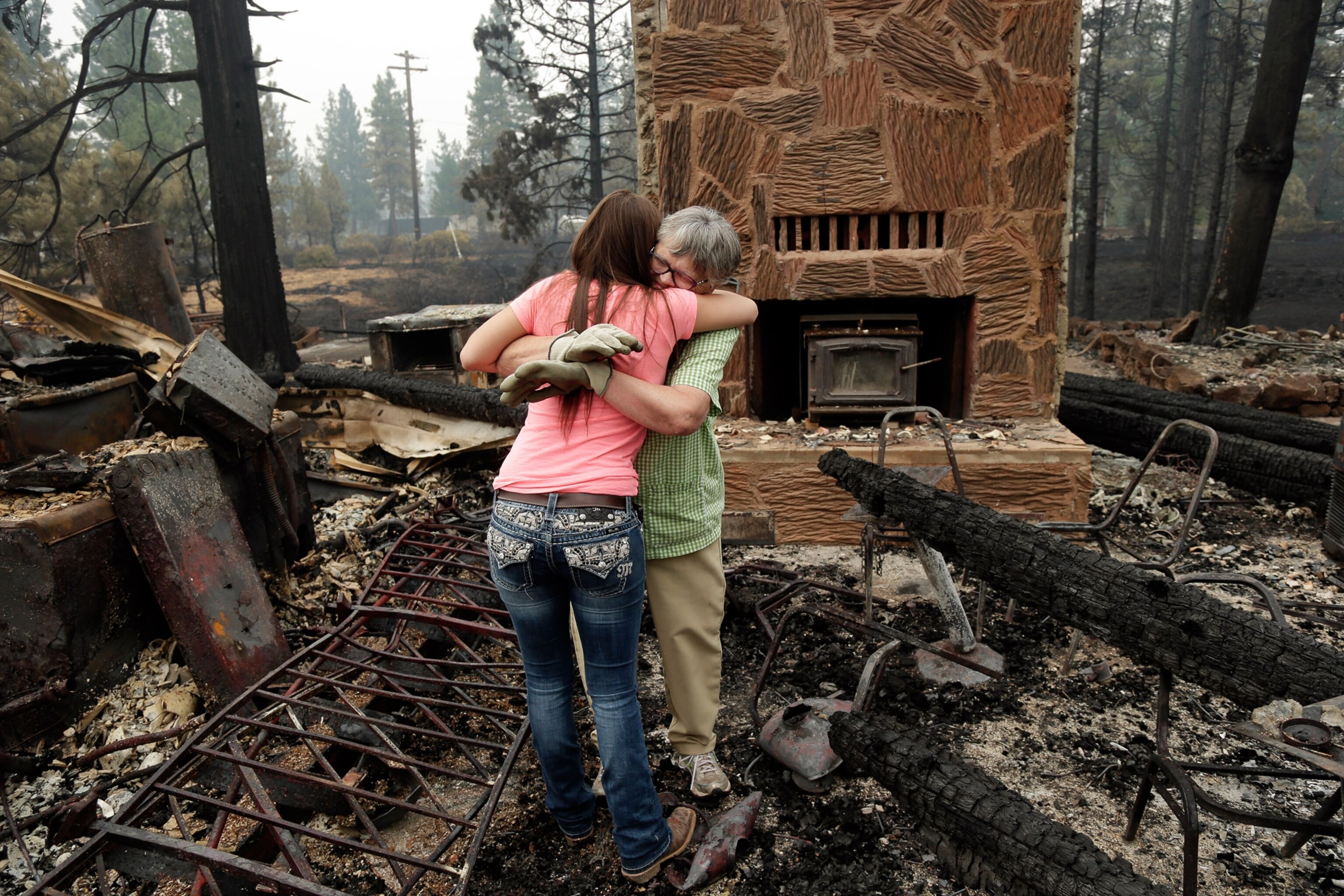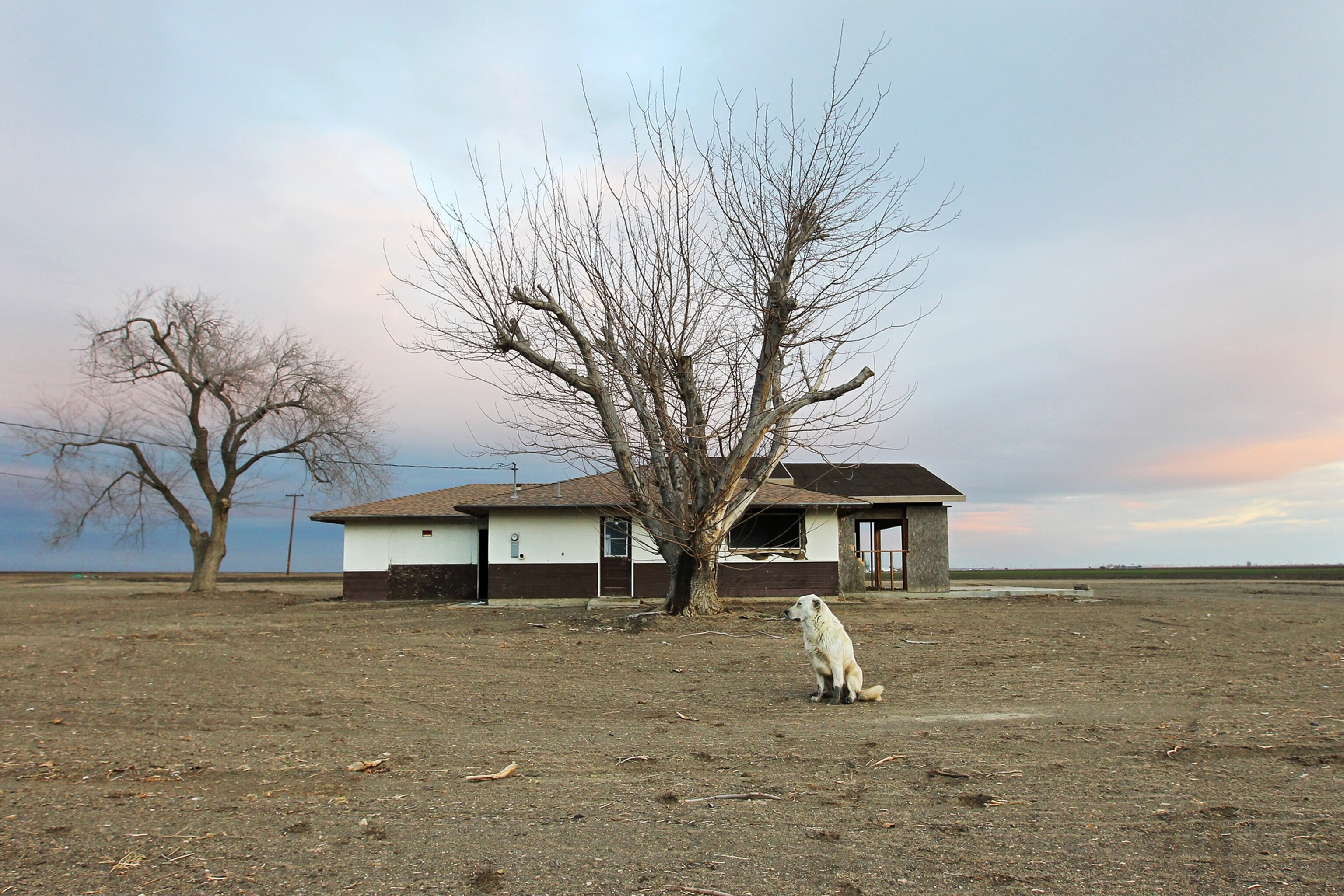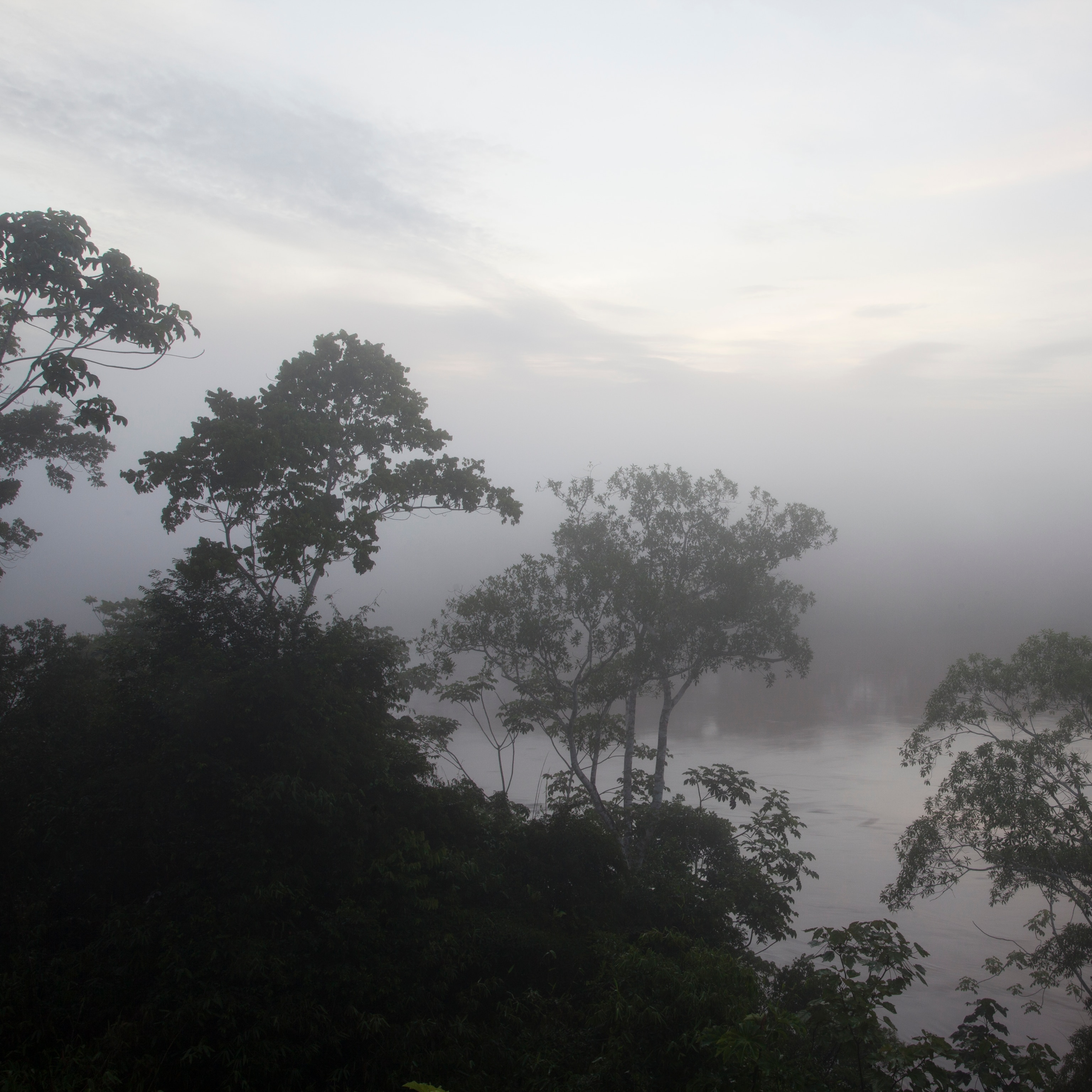
5 Key Threats to California From Climate Change
The Golden State faces an onslaught from Mother Nature.
SACRAMENTO, California—Hints of a changing climate can be found all over central California.
In the western Sierra Nevadas, the air is filled with smoke and haze from wildfires. In the Central Valley south of Sacramento, dust whips across fallow fields, thanks to lack of rain and a record drought. Near the coast, people worry about bigger storms.
"Scientific predictions say that with global warming, we'll see more variability in California's climate, with more intense storms, longer dry periods, and less snowpack," hydrogeologist and geology department chair Tim Horner said from his office at California State University, Sacramento.
All this means climate change is going to force the state to "make some really tough decisions" over the coming years, Horner said.
Golden State officials will have to figure out how to protect the state's long coastline, keep a vast agricultural industry going, apportion dwindling water resources, drive smart development, and keep 38 million residents safe, all while dealing with a financial crisis.
Here are some of the key issues California will soon have to grapple with due to climate change:
1. Drought and Wildfires
Some 75 percent to 80 percent of California's freshwater comes from the Sierra Nevada snowpack, a resource that has dwindled in recent years and is threatened by future climate change, Frank Gehrke, who serves as the chief of snow surveys for California's Department of Water Resources, explained from a granite dome in Yosemite. In February, the Sierra snowpack was only 14 percent of normal.
"Regardless of what happens with climate change, even in a good year we don't have enough water," Gehrke said as he viewed the tiny pockets of ice left at the top of the national park.
Climate scientists predict the region will get even hotter and drier. And as more of the state's precipitation falls as rain instead of snow in the mountains, it will run off the land more quickly, ending up in the ocean. In the short term, farmers and cities will increasingly turn to reservoirs and groundwater, Gehrke said, but how long will that last? As it stands, California has only about a year and a half's supply saved behind dams, and groundwater tables have been dropping precipitously.
Lack of water has also led to more and larger wildfires, including last year's Rim fire, which scorched the largest area on record in the Sierra Nevadas.

2. Coastal Danger
The majority of Californians live along the coast, where they enjoy the storied beaches and bask in the mild climate created by ocean currents and winds. But climate change means increasing risks, Horner warns.
According to the White House's National Climate Assessment released in May, the number of Californians exposed to risk from a hundred-year flood could rise from the current 260,000 to 480,000 by 2100, owing to a projected sea-level rise of 4.6 feet (1.4 meters). Many of those people have "high social vulnerability," meaning they are ill prepared to deal with losses, especially those who live slightly inland but adjacent to the coast. (See "Federal Climate Change Report Highlights Risks to Americans.")
Already, the sea level in California has risen approximately 7 inches (18 centimeters) from 1900 to 2005, reports the National Climate Assessment. Storms are expected to get more severe, with increased risk of flooding. Saltwater is also expected to intrude into fresh aquifers as the sea rises, contaminating precious groundwater.
The National Climate Assessment warned that the San Francisco Bay and San Joaquin/Sacramento River Delta "are particularly vulnerable to sea level rise and changes in salinity, temperature, and runoff; endangering one of the ecological 'jewels' of the West Coast, growing development, and crucial water infrastructure."
3. Bad Air Days
California already has the toughest air quality standards in the country, but much of the state still suffers from pollution. According to the most recent "State of the Air" report from the American Lung Association (ALA), six of the top seven regions with the worst ozone pollution are in California. Los Angeles ranks at the top, followed by much of the Central Valley.
On a recent visit, it wasn't hard to see why. The sky was filled with haze from vehicle exhaust and dust from farm fields. According to the ALA, the top five regions for year-round and short-term particle pollution are in Los Angeles and the Central Valley.
Both of those factors are likely to get worse with climate change, the Natural Resources Defense Council (NRDC) warns in a recent report. Warmer weather tends to make more smog, and drier conditions tend to create more dust.
4. Spreading Disease
Increasing dust also promotes the spread of valley fever, a potentially fatal disease that affects about 150,000 people a year. It is caused by inhaling the microscopic spores of Coccidioides immitis, a soil-dwelling fungus. Valley fever is especially prevalent in the dusty Central Valley, where it affects more than 10 people out of 100,000.
The NRDC also warns that warmer weather could boost the spread of West Nile virus, which has killed two people in California this summer. Higher temperatures can also increase rates of foodborne and algae-borne disease.
5. Loss of Native Fish
California once supported vibrant commercial and recreational fisheries, but the fish have long been in decline. According to Horner, native species like salmon, steelhead, and trout are now outnumbered by nonnative species like carp.
"A lot of the native fish in California are coldwater fish, so as the waters get warmer, they're not going to do as well," said Horner, who leads stream restoration projects around the state.
In fact, researchers at the University of California, Davis, found in 2013 that, of the state's 121 native fish species, 82 percent are likely to be driven to extinction, or close to it, by climate change.
To try to cool the rivers and keep the native fish alive, the state has been releasing water from dams. But that's unpopular with farmers, and works only as long as there is water to release.
Follow Brian Clark Howard on Twitter and Google+.
RELATED
— "California Drought Spurs Groundwater Drilling Boom"
— "California Drought Launches New Gold Rush"
— "New Technology Measures Snowpack Amid California Drought"








